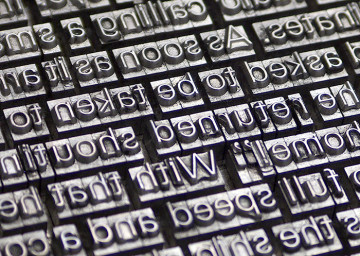 Print outfit Heidelberger Druckmaschinen, better known as Heidelberg has been talking about its coming print sector plans.
Print outfit Heidelberger Druckmaschinen, better known as Heidelberg has been talking about its coming print sector plans.
The company’s Management Board is presenting ‘Heidelberg goes digital!’ – a package of measures for the years ahead with a strategic focus on technology leadership, digital transformation and lots of other buzzwords.
To be fair the company has been doing well with a successful turnaround with a return to sustained profitability, Heidelberg now says it wants continuous growth – but then again who doesn’t?
Group sales of around €3 billion are being targeted with a large number of specific measures in the period to 2022. The company has set its sights on a further significant improvement in profitability, with EBITDA of €250 to 300 million and a net profit after taxes of over €100 million.
Sales in financial year 2016/17 were just over €2.5 billion, EBITDA at €179 million and the net result after taxes at €36 million.
Company’s CEO Rainer Hundsdörfer said that during the next five years, Heidelberg will once again become a leading light in the sector, enjoying strong growth and profits.
“We’ve defined the relevant success factors and have already introduced initial measures. This marks the start of a new era of growth for Heidelberg,” he said.
The glorious five-year plan involves playing a pioneering role in digitization (Simply Smart/Smart Print Shop) with its Push to Stop concept and also in industrial digital printing for the packaging market with the Labelfire and Primefire product lines. The company thinks it can double the market share in digital printing from the current level of less than five percent to as high as ten percent and generate additional sales potential amounting to around €200 million in the period to 2022.
Money is to be made in digital transformation, including the digitisation and integration of the previously separate areas of equipment, software, services, and consumables with straightforward, transparent pricing of all offerings for customers.
“The entire work process at the customer’s print shop will be addressed from a single source using a single e-commerce sales platform. This will reduce complexity and costs for customers while also boosting their productivity,” Hundsdörfer said.
The aim here for Heidelberg over the next five years is to increase the company’s market share for consumables from the current level of five percent to just under 10 percent while also leveraging additional sales potential of €250 million.
Part of this strategy is the takeover of Fujifilm’s coatings and pressroom chemicals business in the EMEA region, which represents a sales volume of some €25 million. It will take effect as of July 1, 2017.
Heidelberg is using this takeover to expand in the attractive growth segment for consumables. The transaction is another step in pursuing the company’s growth strategy of developing a fully comprehensive cross-sector portfolio that is geared toward specific customer requirements and also further strengthens Heidelberg’s market position for coatings and pressroom chemicals.
 The printer market has bounced back after being gutted by the pandemic.
The printer market has bounced back after being gutted by the pandemic.








